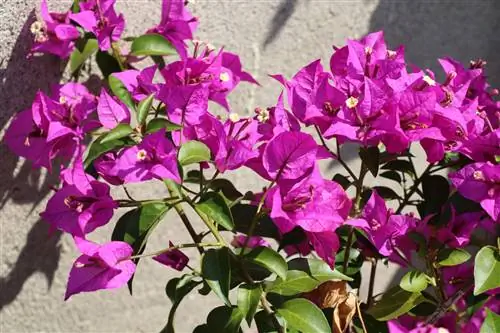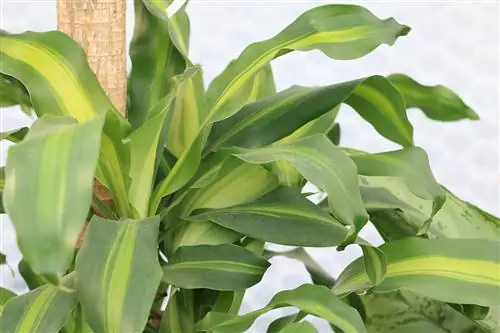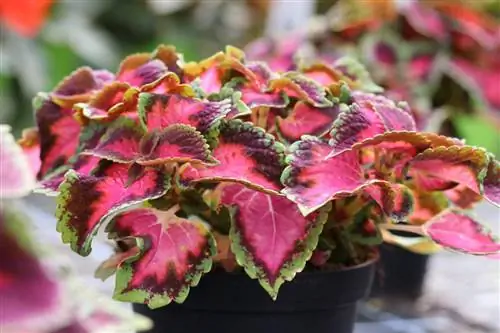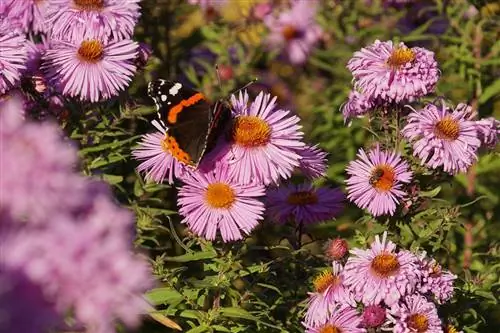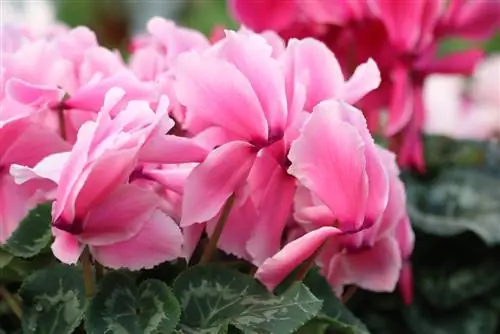- Author admin [email protected].
- Public 2023-12-17 03:39.
- Last modified 2025-01-24 12:45.
The lemon cypress or cypress needs protection and suitable conditions during the winter so as not to suffer damage from frost and snow. This is especially true for plants that are grown in containers. Although the plants are easy to care for in other areas, longer and harsher winters pose a danger to them. Our tips and advice will help you overwinter the plants without any problems.
Preparation
Cypress trees need nutrients in moderation and should therefore be fertilized regularly. Suitable fertilizers include:
- Liquid fertilizer for conifers
- well-rotted compost
- Horn shavings
- Long-term fertilizer
- Crap
For outdoor plants, fertilization should be carried out once a year. If the conifer is cultivated in a bucket, fertilization can be carried out monthly or every two months. In both cases it must be fertilized in spring if possible, but not later than September. Fertilizing too late prevents the plants from preparing adequately for winter.
Further preparation includes, in addition to a sufficient supply of nutrients and the right time to fertilize, also choosing the right location for the plants. In addition to frost, cold wind can also weaken the plants and cause damage.
Tip:
In autumn, broken or dead branches should also be removed. As these increase the risk of disease and rot.
Overwinter in a bucket
Cypress trees in pots are not hardy. Both the roots and the above-ground parts of the plant are damaged very quickly in sub-zero temperatures. The following points are therefore important:
- frost-free place with temperatures between five to ten degrees
- Choose a location that is as bright as possible
- Insulate the bucket from below if the floor is very cold
- Do not let the soil dry out completely and avoid waterlogging
Tip:
If there is not enough space with the right conditions, the plants can also be professionally overwintered in a nursery or tree nursery that offers the appropriate facilities.
Wintering outdoors
If the lemon cypress is outdoors and has been planted here, for example, as a privacy hedge, it is of course not possible to overwinter indoors. Therefore, appropriate protective measures must be taken. On the one hand, this involves covering the tree slices. Suitable materials include:
- Garden fleece
- Jute or burlap
- Mulch
- Straw
Applied as a thick layer, they protect the floor and have a slightly insulating effect. To protect against strong, cold winds, the plants can also be wrapped with burlap, jute or garden fleece. However, this should only happen if it is necessary due to persistent low temperatures. Because the plants need enough light even in winter.
Even with this protection, the Mediterranean conifers are only partially hardy. If temperatures remain below -15°C for a long period of time, they will still be damaged. Therefore, before choosing plants, you should check whether they are really suitable for the region or whether an alternative, such as false cypress, would be a better choice.
Care in winter
Light and suitable temperatures are two crucial factors for the successful wintering of the cypress. However, care must also be taken to ensure there is an adequate supply of water. It is important to avoid drying out of the substrate and waterlogging. When cultured in a bucket, this is comparatively easy. You just have to check once a week whether the soil is still slightly moist and there is no water at the bottom of the pot.
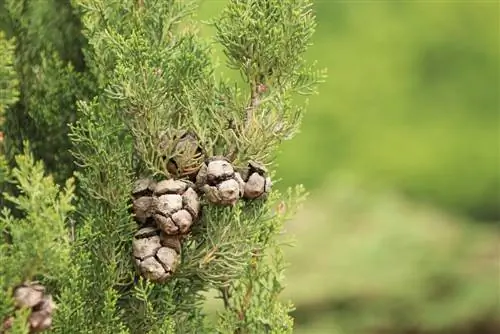
A little more effort has to be put into the plants that were planted outdoors. To ensure sufficient water supply, soil checks should also be carried out. Since the conifers can take care of themselves better due to their larger root mass and have significantly more substrate available to store moisture, a check every two to three weeks is sufficient in dry winters. For this purpose, however, the protective covering on the tree slices must be removed at certain points.
If the soil seems very dry, it can be lightly watered on frost-free days. Only small amounts of water are required. However, in winters with regular rain or snowfall, this measure is not necessary as sufficient liquid gets into the ground.
Alternatives to cypress trees
If the region's climate suggests longer and harsher winters, the cypress is not the best choice for planting outdoors. However, there are some alternatives available. For example:
Bucket Culture
A privacy screen can also be created with cypresses grown in pots. However, the maintenance effort is increased due to more frequent watering, fertilizing and the necessary repotting. However, they are comparatively easy to overwinter. In addition, they can be cut in spring and late summer from August onwards and thus kept compact in size.
Mock cypress
The false cypress, also known as Chamaecyparis, is another alternative. It is visually similar to Mediterranean conifers and is available in different colors and shapes. Since it is more frost hardy, it is better suited to overwintering outdoors - even in regions with harsher climates.
Thuja
The so-called tree of life is a popular garden plant, easy to care for and resilient. However, like cypresses, the plants are poisonous, which should be taken into account when choosing, especially if children or pets play in the garden.
Virginian Rocket Juniper
In botanical terms, the plant is called Juniperus virginiana and its growth habit is very similar to the cypress. However, it is much more robust against frost.
Willow-leaved pear
This rather unknown plant is a plant that looks just as Mediterranean as the cypress. However, the foliage is more reminiscent of that of olive trees. In addition to their robust winter hardiness, the willow-leaved pears also offer edible fruits and can be cultivated as columnar fruit, so that their shape is similar to cypresses.


